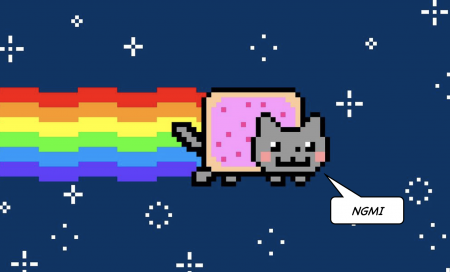Uniqueness

|
The Blockchain’s unique selling point is uniqueness: a single entry on the ledger is there, it is fixed, it is unique for all time and uneditable, without editing every node on the distributed ledger. Encoded into its design is a uniqueness quite alien to the engineering of the internet, which is predicated, more or less, on copying as a means of transmission. Where the regular internet not only allows lossless copying, but encourages — is predicated on — it: that’s at the heart of its end-to-end architecture — it suffers from the conceptual issue that any digital copy of an original digital artefact is, to every intent and purpose, the equal of the original, a copy of an entry on the distributed ledger is, ontologically, not. By its code, it is unique. Tokens on a blockchain are to documents on the internet as Millenials are to Boomers: digitally native. They exist in, and are of, the digital realm.
In this regard, blockchain and the regular internet are incommensurable: non-overlapping magisteria. This is the price you pay for entering the distributed ledger: you get your uniqueness, but in return you must leave the flawed peer-to-peer world, everything on it, and everything on the flawed analog world underlying that, behind.
You could recreate the regular internet on the blockchain, but it would be — well, different.
Now bitcoin — say what you like about it, and we have plenty to say elsewhere — is “blockchain native” — it exists in, of and only within the blockchain. Bitcoins are therefore intrinsically, certifiably, unique. That is about their one true advantage.
Now if you create your artwork on the blockchain, you get that same native uniqueness: any facsimiles of the artwork that exist off blockchain — copies floating around on the internet, hanging in fashionable galleries and so on — are, certifiably, ontologically inferior to the one on the ledger. That one is the real deal.
But — and maybe walled-in social media platforms on the internet, structured as DAOs are different; the JC doesn’t yet really understand them — mostly, a blockchain is a crappy place to create art. It’s a ledger system. It is made of cryptographically-hashed code. That is, artistically, limiting.
Look, it’s one thing for David Hockney to do all his painting on an iPad: quite another to realise your whole ouevre in an electronic cashbook. The blockchain as it is, is a clunky, slow, costly, inflexible thing with only one advantage: uniqueness.
This is great if pixellated rainbow cat-poptarts are your thing, but for anyone making art the old-fashioned way — paint and paper, sand and glue, inverting urinals and signing them — or even more so writing music or literature — whose artwork “natively” lives outside a distributed ledger, or whose value does not subsist in its substrate, but rather in the abstract information the substrate carries (such as a book, film or score) — having your artwork encoded on a blockchain, in a unique substrate doesn’t really help you.
If you import a "canonical" “real world” artwork, then the blockchain representation is the one that is certifiably, ontologically inferior: it is uniquely, definitively not the original work.
Ironically, putting a “real” artwork on blockchain makes your non-fungible token worse than a straight digital copy, because a token definitely isn’t the original.
Is uniqueness really, er, special?
The rampant copy-ability of anything everything in Web 2.0 no doubt prompted the stampede to non-fungibility. Authenticity is in deep demand: no-one trusts experts anymore. Everything is ripped off. Everything is fake. Indubitability — certainty — is some kind of holy grail.[1]
But is uniqueness, in the abstract, of intrinsic value, in and of itself?
We say, “no,” all the above notwithstanding. The JC has a small commonplace book of poems he composed, as a moleish adolescent.[2] It exists in single copy, in fountain pen ink on cartridge paper, rendered in his youthful, spidery left-handed scrawl. Make no mistake: these are some of the worst poems composed in the history of civilisation.[3] Not one has been committed to any other format and nor, if the JC has any say in the matter, will they ever be. They are, thus, utterly unique.
Now: do these ghastly poems have a single iota of value? Outside their very real extortion potential, they do not. Does their critical uniqueness change this? It does not.
There is great danger of crushing humiliation should they ever get out. So why does he keep them? The JC has wondered about this, and never managed a good answer — beyond the thrill they generate. The thrill from the singular terror that they ever be found by anyone and leaked to a disinterested world — God forbid, minted on a blockchain: encoded on every node of our future universe, perpetually inerasable part of our canon.